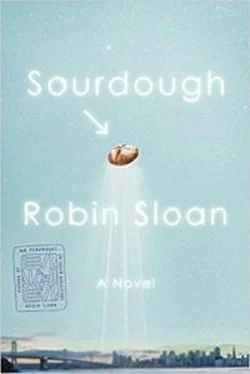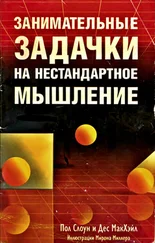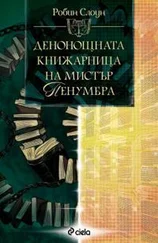I followed him as he plunged down the corridor, which was not wide to begin with and made narrower by the shelves and legal boxes on both sides. Cold white lights above were set up on motion detectors, and they snapped to life as we approached.
As we walked, Horace’s fingers danced from the lips of shelves to the lids of legal boxes. I saw annotations on the fronts of the boxes. The years ticked back like a time machine: 1992 , 1991 , 1990 . Horace’s handwriting gave the nines long elegant tails.
Behind us, the motion-activated lights snapped off.
We passed through a tunnel of memory in a bubble of light.
“It began with a windfall,” Horace said. “I used to haunt estate sales. It was my hobby. I was less focused then … I was interested in fin de siècle pottery, rejected applicants to the Oulipo, siege weaponry of the Gironde. But this collection that I found, it was something entirely new to me. He was a great eater, you see! John Eliot Sinclair of San Francisco. Born in 1913 and died in 1998, during that wet, wet winter, alone in his enormous house on Sacramento Street, and in the time between, he made it his mission to eat at every restaurant that opened in his city. And”—Horace turned to me, alive with astonishment—“he kept the menus. He kept all the menus!”
I didn’t think you were, strictly speaking, supposed to keep the menus.
“John Eliot Sinclair must have been very charming. Or clandestine. Or both. Probably both.”
“How many menus are we talking about here?”
“He was not the only one with this passion. After I acquired the Sinclair collection—for the price of hauling it away, not a penny more—I began to wonder if I hadn’t stumbled onto something. The archives of the great eaters. That is what I am assembling. Here!”
He stopped short and selected a volume, fat and puffy like a photo album. He held it against the shelf and flopped it open; inside, protected by plastic overlays, were wine labels, fastidiously peeled from their bottles and flattened, each with an accompanying note written in a spidery hand. More albums waited. The wine drinker’s liquid autobiography occupied four entire shelves.
When I thought of archives—documents stored and studied—I thought of poets, writers, politicians, scientists. But why shouldn’t the archives of the eaters also have avid keepers?
Horace kept walking, the lights snapping on ahead of him, and I followed. The years ticked back, and around 1979, there was evidence of a transplant in process, documents being moved out of old boxes, foxed and rippled with age, into new ones, freshly assembled.
A cup from Naz’s coffee bar sat on the corridor’s floor beside one of the boxes.
Horace turned. “I was revisiting the Louise Bouk collection, which is of particular interest because she overlapped with John Eliot Sinclair in San Francisco. Sinclair loved the steak houses. Bouk was different; she was enthusiastic about California cuisine.”
“Raw turnips drizzled in olive oil? That sort of thing?”
“I’m not sure the cuisine’s adherents would call that its most soaring exponent, but yes, you have the idea. In Bouk’s collection, I found … No, not this one … Where is it…?”
He was pulling out menus as big as newspapers, hand-lettered and reproduced using some antique process on heavy brown paper, with fine-lined illustrations that made them look like pages from a Victorian children’s book. The menus were all dated 1979.
I saw one menu titled JAPANESE DEATH POEM. Another called THE PLUM’S LAMENT. I saw a tiny, perfect sketch of a clutch of carrots with shaggy tops. Another of a very handsome goose.
Horace found his quarry. “Here,” he said, offering it. “December 1979.”
The menu was titled A FEAST FOR THE UNREQUITED, and it began with a dish called Sourdough à la Masque served with smoked salt and bone marrow. It was accompanied by a very respectable rendering of a loaf of bread, darkly crosshatched. The loaf was oblong and rustic and unmistakable: because a face leered out of the crust.
The name of the restaurant was written in tiny script at the bottom of the menu, almost reluctantly. I read it aloud: “Café Candide.” I looked at Horace. “Have you heard of it?”
He blinked. “Yes, Lois. I have heard of it.” He looked at me strangely. “Never? Truly? Perhaps … the Café Candide cookbooks … simple black covers, very elegant…? She sold two million of them?”
Had I seen them at the bookstore on Clement Street? It was possible, but …
“Lois. Café Candide is a very important place. It is the wellspring.” He shook his head. “Surely you’ve heard of Charlotte Clingstone.”
“Is she on TV? I don’t really watch—”
“I’ll tell you this.” Horace snorted. “You have dined, apparently without realizing it, in restaurants established by alumni of her kitchen. I know this for a fact because all the restaurants are established by alumni of her kitchen. It is the greatest and farthest-reaching culinary mafia since the twelve pupils of Apicius, who went out like disciples … Wait! You have read Everett Broom!”
The tattooed baker whose book taught me the basics of sourdough. Yes, of course.
Horace raised a finger, triumphant. “He, too, hails from the Candide clan!” Then his look grew admonishing. “Lois, it is a lazy thing not to know whose world you live in. This is Charlotte Clingstone’s.”
He held up the menu with its leering sourdough.
“And you see, that makes this interesting . Café Candide, of all places! How did a loaf with this … look arrive at Charlotte Clingstone’s table? How did it come into your possession, more than three decades later? Something links you to her.” He paused, as if to digest the implausibility of that statement. “In any case, this is a highly suggestive document.”
The lights above snapped off. We’d sat talking for too long.
“Does that happen often?”
“A fair amount, yes,” Horace said. “I don’t mind. It gives me a minute to think.”
We stayed quiet. Thinking.
“You must seek her out,” Horace said at last.
He was right.
The lights snapped on again, revealing Horace on his feet, caught mid-gesticulation. “It takes a bit of a leap to wake them up.” He straightened. “Bring the menu. I’ll make you a copy.”
We walked back the way we’d come, resynchronizing with the present.
From the disarray in the corridor, and from the bright sticky notes affixed to the shelves and boxes and walls and floor, overlapping in places and fluttering like feathery lichen as we passed, it became clear: this was not a sleeping archive. Horace had a project under way.
“What are you doing with all this?”
“I am following the path that the archive of John Eliot Sinclair set me on. I have come to believe that food is history of the deepest kind. Everything we eat tells a tale of ingenuity and creation, domination and injustice—and does so more vividly than any other artifact, any other medium. There are histories of food, of course. I have them all here. And yet … something is missing. So, I am trying to write a book.”
He sighed.
“And even if I fail—this is always the archivist’s consolation—perhaps I will have laid a foundation for someone wiser.”
We walked farther.
“I gave this place its name, you know. I said it to Lily. I said, ‘This man, our benefactor, he works powerfully in secret like a lump of marrow.’ She repeated it to him, and the next thing I heard was that the place was called the Marrow Fair! And then, to his chagrin perhaps, he became Mr. Marrow. It’s a wonderful word, isn’t it? From the Old English mearg , the innermost core. The hidden heart! It makes our blood in its secret chambers. That is Mr. Marrow’s ambition, I believe. The production of new blood.”
Читать дальше










